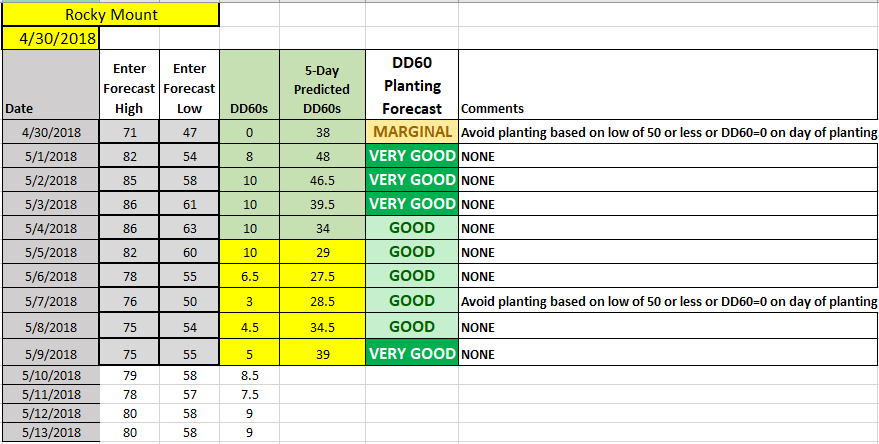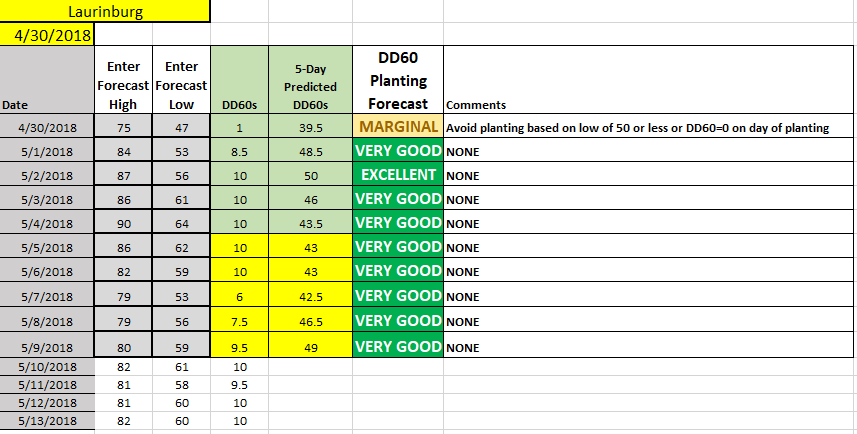Cotton planting conditions April 30, 2018
go.ncsu.edu/readext?524351
en Español / em Português
El inglés es el idioma de control de esta página. En la medida en que haya algún conflicto entre la traducción al inglés y la traducción, el inglés prevalece.
Al hacer clic en el enlace de traducción se activa un servicio de traducción gratuito para convertir la página al español. Al igual que con cualquier traducción por Internet, la conversión no es sensible al contexto y puede que no traduzca el texto en su significado original. NC State Extension no garantiza la exactitud del texto traducido. Por favor, tenga en cuenta que algunas aplicaciones y/o servicios pueden no funcionar como se espera cuando se traducen.
Português
Inglês é o idioma de controle desta página. Na medida que haja algum conflito entre o texto original em Inglês e a tradução, o Inglês prevalece.
Ao clicar no link de tradução, um serviço gratuito de tradução será ativado para converter a página para o Português. Como em qualquer tradução pela internet, a conversão não é sensivel ao contexto e pode não ocorrer a tradução para o significado orginal. O serviço de Extensão da Carolina do Norte (NC State Extension) não garante a exatidão do texto traduzido. Por favor, observe que algumas funções ou serviços podem não funcionar como esperado após a tradução.
English
English is the controlling language of this page. To the extent there is any conflict between the English text and the translation, English controls.
Clicking on the translation link activates a free translation service to convert the page to Spanish. As with any Internet translation, the conversion is not context-sensitive and may not translate the text to its original meaning. NC State Extension does not guarantee the accuracy of the translated text. Please note that some applications and/or services may not function as expected when translated.
Collapse ▲Keith Edmisten, Professor of Crop Science & Soil Sciences and Extension Cotton Specialist
Guy Collins, Extension Associate Professor – Cotton
The chart below illustrates how we define planting conditions. We cap DD60’s at a maximum value of 10 for each day. If you are computing DD60 accumulation on your own and a day is predicted to have 15 DD60’s, only use 10 for that day. We also lower the planting conditions by one category if a low of 50 or less or DD60=0 is predicted on day of planting
| Relationship Between Predicted DD-60s and Planting Conditions. | |
| Predicted DD-60 accumulation for five days following planting |
Planting conditions
|
| 10 or fewer | Very poor |
| 11 to 15 | Marginal |
| 16 to 25 | Adequate |
| 26 to 35 | Good |
| 36-49 | Very good |
| 50 | Excellent |
| Avoid planting cotton if the low temperature is predicted to be below 50°F for either of the two nights following planting or predicted daily DD60’s is near zero for the day of planting. | |
Soil temperature at a 3-inch depth was 61.6 degrees at 8 this morning (April 29). That is below what we would like to see for planting cotton, however, the soil temperature reached 65 by 11:00 a.m.
The DD60s predicted for the 5 days following planting at Rocky Mount are included in the table below and the predicted conditions for Laurinburg are below that. Notice the low night time temperature for the 30th. If you plan to plant on the 30th or May 1st, pay attention to soil temperature as you may want to delay planting until temperatures reach the mid-60s. Special thanks to Dr. Sandy Stewart for helping us with a program to help automate the calculations for this chart.

*DD60’s are capped at 10 for any one day.

*DD60’s are capped at 10 for any one day.
It is certainly possible to achieve a good stand-in marginal conditions. Please consult Strategies for Planting Cotton in Suboptimal Conditions if you decide to plant under marginal conditions.


